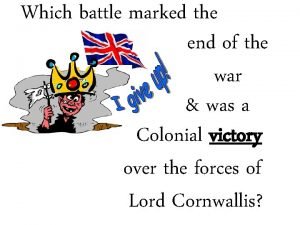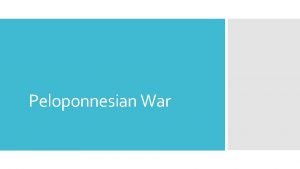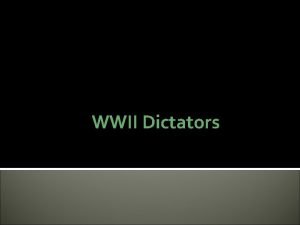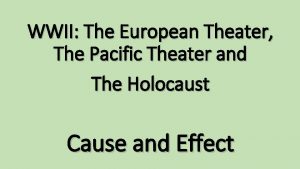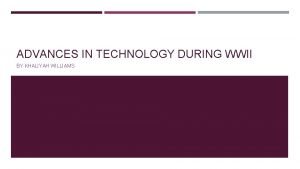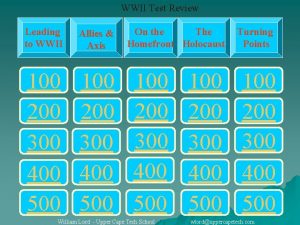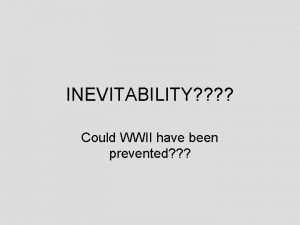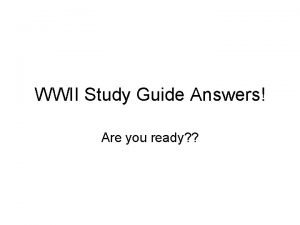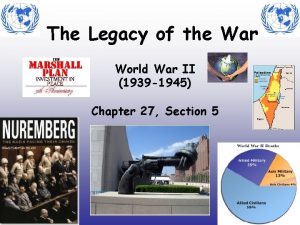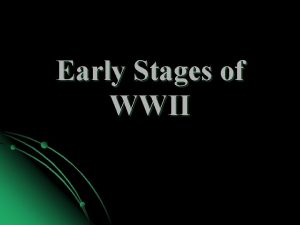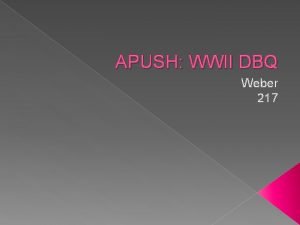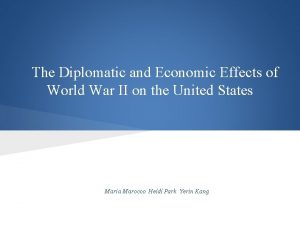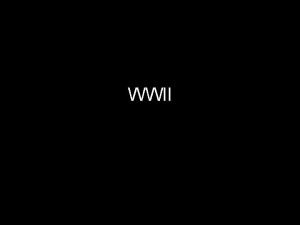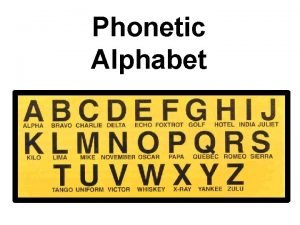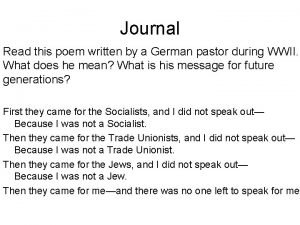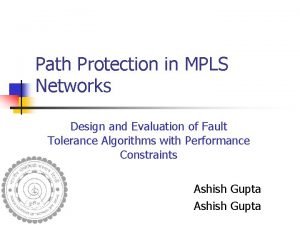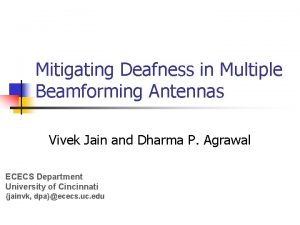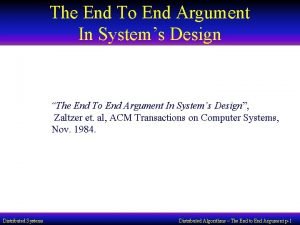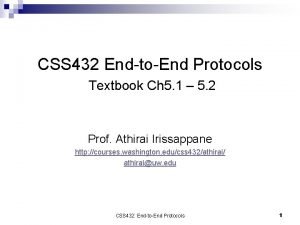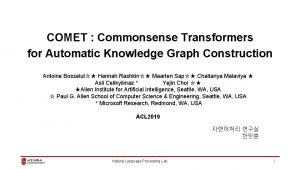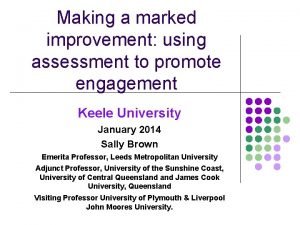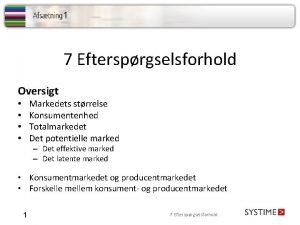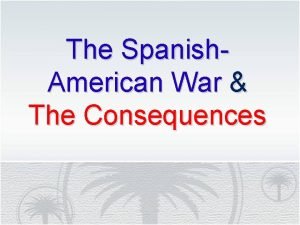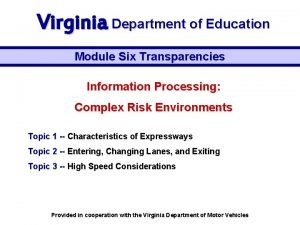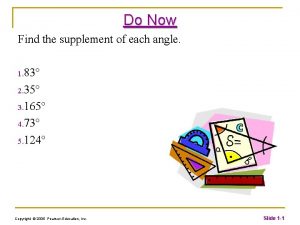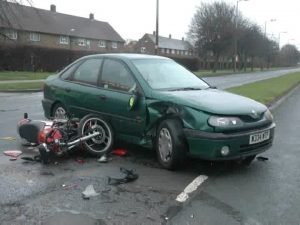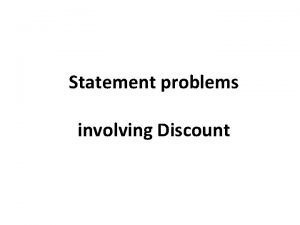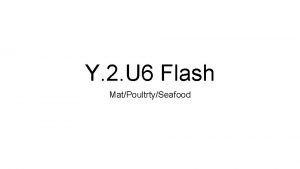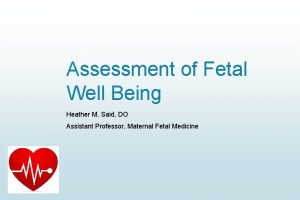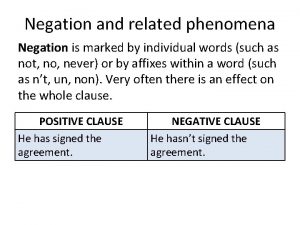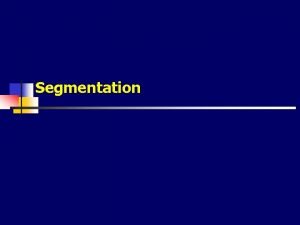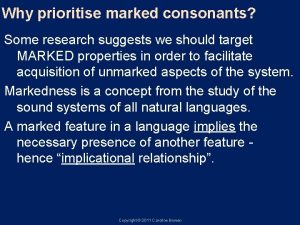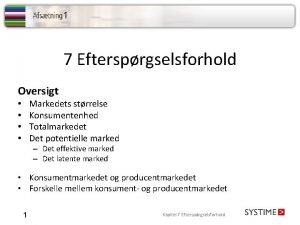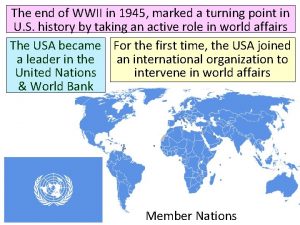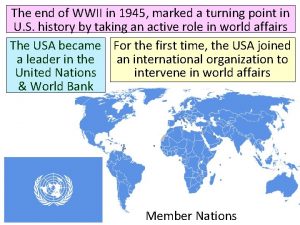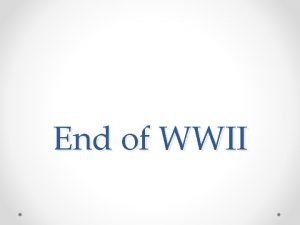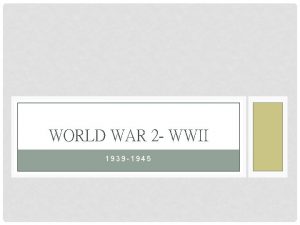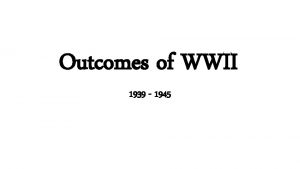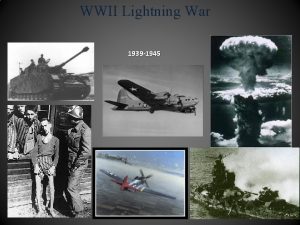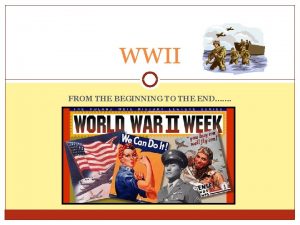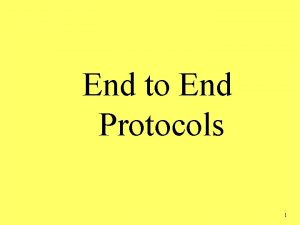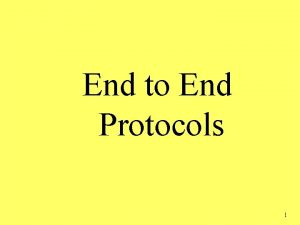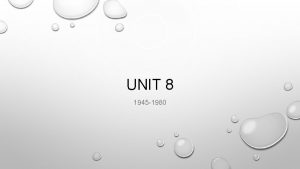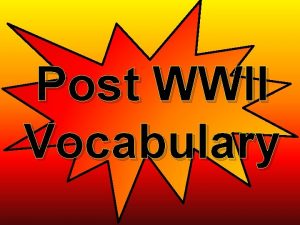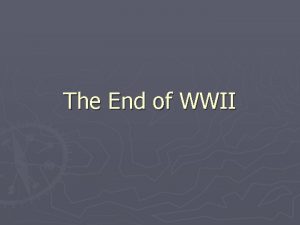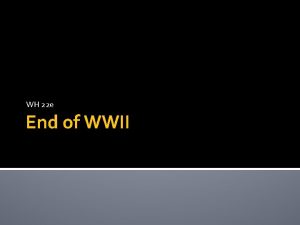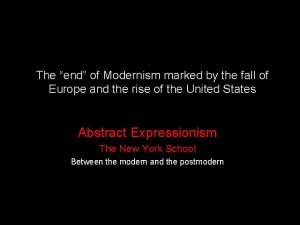The end of WWII in 1945 marked a




















































- Slides: 52

The end of WWII in 1945, marked a turning point in U. S. history by taking an active role in world affairs The USA became For the first time, the USA joined a leader in the an international organization to United Nations intervene in world affairs & World Bank Member Nations

The U. S. occupied & helped rebuild Japan after WWII

The U. S. helped found Israel as a Jewish nation in the Middle East

Themost United States The important & Soviet were change in. Union U. S. foreign superpowers rivals policy after & WWII whothe dominated was beginning politics ofworld the Cold War From 1945 to 1991, What were the& the United States Soviet entered of an major. Union ideologies era of distrust & hostility the USA & Cold USSR? known as the War


The One United of the. States most &important Soviet Union changes were superpowers after World&War rivals II was whothe dominated beginning of world the Cold politics War This. During was anthe era. Cold of competing War, the ideologies: United States the USA & Soviet promoted Union democracy entered an & capitalism era of distrust while & the hostility USSR triedfrom to spread 1945 to communism 1991 The different ideologies between USA & USSR and their desires to spread these ideas led to an era of distrust, hostility, proxy battles, & near nuclear

Causes of the Cold War The In During the USA 1920 s, WWII, sentled After Lenin’s Vladimir Lenin troops Americans the toin USA fight feared &the death 1924, the Bolsheviks in “Red the USSR Army” spread worked during of Joseph Stalin the Russian the Communism together Russian Civil to became dictator Revolution in defeat War the& ofduring the USSR 1917 “Red Axis Powers, Scare” started his but. . . Five Year Plans

…World War II increased tensions between the USA and USSR Stalin never trusted the Britain or the USA during World War II The Manhattan Project gave the USA a monopoly on nuclear weapon technology

At the Yalta Conference, But, Stalin wanted a Stalin agreed to allow “buffer zone” between self-determination in the USSR & the democratic Eastern Europe nations in Western Europe Stalin used his military to install communist gov’ts in Eastern European nations

As Inathe result, years. Eastern after World European War nations II, the USA began turned to communist view Stalin & as became a new Soviet Hitler—a satellites: dangerous nations dictator that were who wanted influenced to take by the over USSR the world

By 1946, Europe was divided by an “iron curtain” that separated democratic/capitalist Western Europe from communist/totalitarian Eastern Europe Communism & Totalitarianism Capitalism & Democracy

The U. S. created a foreign policy called Containment to stop Soviet influence & the spread of communism When the USSR began tofirm, pressure Greece & Turkey “A long-term, patient but & vigilant containment to turn communist, the U. S. created the force of Russian expansionist policies…will eventually Truman promising & military the. Doctrine, USSR to live in peaceeconomic with the West” help to any nation threatened by George communism —Secretary of State, Marshall T= The Truman Doctrine worked & neither Greece nor Turkey fell to communism

European nations had difficulty recovering after WWII which led to fears of communism in Europe The U. S. created the Marshall Plan which offered $13 billion to help rebuild post-war Europe M= By 1952, Western Europe recovered & Communism never took root

Marshall Plan to Aid Europe 1948 -1952

In 1948, the USSR used military force to turn Czechoslovakia to communism; This led to fears that Stalin would use similar tactics in Western Europe In 1949, the United States formed the North Atlantic Treaty Organization (NATO): a military alliance among democratic countries in Europe & North America

NATO was one of many alliances the USA would form with democratic nations over the course of the Cold War NATO Communist Bloc

In 1947, the U. S. government created 3 new agencies to better meet the challenges of the Cold War The Department of Defense was reorganized to created an independent Air Force (which was preferred military agency of the Cold War because airplanes could drop nuclear bombs if needed)

In 1947, the U. S. government created 3 new agencies to better meet the challenges of the Cold War The Central Intelligence Agency (CIA) was created to spy on foreign nations, collect national security information, and carry out covert operations

In 1947, the U. S. government created 3 new agencies to better meet the challenges of the Cold War The National Security Council (NSC) was created to advise and assist the president on national security and foreign policy matters

At the end of WWII, Germany was divided into zones occupied by the USA, Britain, France, & the USSR Berlin, the German capital, was also divided but was located in the Soviet zone In 1948, Stalin tried to turn all of Berlin communist & ordered the Berlin Blockade which shut down all ground transportation to West Berlin

In response, the U. S. began the Berlin Airlift For 11 months, U. S. & British planes supplies landed in Berlin to bring food, fuel, & supplies Stalin admitted defeat & lifted the blockade in 1949 The United States successfully kept West Berlin from turning communist

From 1945 to 1949, But, in 1949 Communist the United States forces led by Mao Zedong successfully contained took control of China and communism in Europe the Cold War spread to Asia The fall of China was a shock to the USA & President Harry Truman took the blame for “losing China”

The U. S. response to the fall of China was to more aggressively confront communism the world The USA was afraid of a “domino theory” in which communist nations turn their neighbors communist As a result, the USA vowed to contain the spread of communism anywhere in the world The USA acted when communism threatened Korea

In 1950, North Korea (using Soviet supplied weapons) crossed the 38° & attacked South Korea When South Korea appealed to the United Nations, the USA sent troops to Korea to But, whencommunism the USA pushed contain too close to China, the Chinese Army entered the war & helped North Korea After WWII, Korea was divided along the 38° with a communist gov’t in North Korea & a democracy in South Korea

The USA successfully stopped communism from spreading into South Korea & showed that it was willing to fight to contain communism After 3 years of fighting, a ceasefire was agreed to in 1953, the fighting stopped, & the 38° was restored as the boundary between North & South Koreas

From 1945 to 1949, But over the next 40 years, the United States the Cold War intensified as successfully contained communism spread to Asia, communism in Europe Africa, and Latin America The Cold War intensified as new nuclear weapons were introduced; espionage (spying) increased; & wars broke out in Korea, Vietnam, & Afghanistan


During the Cold War, the USA & USSR were rival superpowers who competed to spread their ideology

From 1945 to 1949, President Truman used containment to successfully stop the spread of communism in Europe Marshall Plan NATO Berlin Airlift Truman Doctrine

When communism spread to China in 1949, the USA feared the “domino theory” and became more aggressive in its efforts to stop communism (Korean War)

From 1949 to 1960, the Cold War escalated as a result of a nuclear arms race, space race, & espionage

The U. S. monopoly on nuclear weapons ended in 1949 when the USSR successfully tested an atomic bomb The Soviet development of the atomic bomb led to a nuclear arms race between the USA & USSR

In 1952, the USA tested the The Soviet Union first hydrogen bomb which responded by is 1, 000 times more powerful detonating its own than the atomic bomb hydrogen bomb in 1953

By 1959, both the USA & USSR developed rockets called intercontinental ballistic missiles (ICBMs) that could deliver nuclear warheads to distant targets U. S. Polaris Submarine Soviet Transporter Erector Launcher (TEL) U. S. Titan ICMB from the 1960 s Soviet ICMBs from 1960 -1975

Dwight Eisenhower was elected president in 1952 & served until 1961 Eisenhower was a war hero who planned the D-Day invasion during World War II His military experience gave Americans confidence that he could face threat of the USSR during the Cold War Ike campaign commercial

In the 1950 s, President Eisenhower escalated the Cold War by using brinkmanship: threatening to use nuclear weapons & willingness to go to the brink of war If the USSR attacked a NATO member, the U. S. would use massive retaliation: attack every major Soviet city & military target As a result, the USA & USSR began stockpiling nuclear weapons & building up their militaries

Fears of a nuclear attack and spread of communism led to a Red Scare in the late 1940 s & 1950 s Americans grew worried about Communists & Soviet spies living in America The Loyalty Review Board was created to investigate & dismiss “disloyal” government employees The House Un-American Activities Committee (HUAC) investigated suspected communists in the entertainment & other industries From 1947 -1951, 3. 2 million gov’t employees were investigated & 212 were dismissed as security risks (2, 900 resigned rather than face investigation)

In 1947, numerous Hollywood writers & executives were investigated by HUAC; 500 were blacklisted from the film industry & some were sent to prison for refusing to testify (the “Hollywood Ten”)



Red Scare fears in America were heightened by the discovery of spies working for the USSR: State Department employee Alger Hiss was convicted of spying for the USSR Julius & Ethel Rosenberg were executed for passing atomic bomb secrets to the USSR


In 1950, Wisconsin Senator Joseph Mc. Carthy emerged as the leader of the anti-communist Red Scare He attacked Truman for allowing communists to infiltrate the government He used public trials to make unsupported accusations against suspected communists in the State Department & the U. S. military “Mc. Carthyism” did not result in a single confirmed communist or spy in the U. S. gov’t

To combat American fears of a nuclear attack, the U. S. government responded in a number of ways National and local governments prepared citizens for a Soviet nuclear attack on the United States Citizens built fallout shelters in their backyards Cities and schools practiced building evacuations and “duck & cover” drills

In response to the threat of a Soviet nuclear attack, Congress created the Interstate Highway System in 1956 41, 000 miles of highway connected U. S. cities and promoted trade & travel Highways served as a means to evacuate cities during a potential nuclear attack

U. S. -Soviet relations changed in 1953 when Stalin died after 30 years of absolute rule over the Soviet Union In 1955, Khrushchev Nikita Khrushchev formed a communist took over and began to alliance to rival NATO, aggressively challenge U. S. influence in the world called the Warsaw Pact In 1956, the Soviet Union threatened expansion into the Middle East President Eisenhower responded with the Eisenhower Doctrine, pledging the USA to protect the Middle East from Communism

Quick Class Discussion: Which part of the world did the U. S. promise to protect in the (a) Monroe Doctrine, (b) Roosevelt Corollary, (c) Truman Doctrine, and (d) Eisenhower Doctrine?

Sputnik shocked Americans In 1957, the USSR who feared the U. S. had used its first ICBM to fallen behind the USSR in launch Sputnik, the science & technology first satellite into space As a result of Sputnik, the Cold War escalated into a space race to show American & Soviet dominance

The U. S. government reacted to Sputnik by passing the National Defense Education Act to promote math, science, and technology education and to fund university research

In 1958, the USA created National Aeronautics & Space Administration (NASA) to catch up to the USSR The USSR repeatedly beat the USA in space by launching the first man into orbit & orbiting the moon NASA’s original seven NASA Mercury astronauts

By 1960, Eisenhower’s presidency was coming to an end and the Cold War was as tense as ever Eisenhower’s effectively limited communist expansion during his eight years as president …but… Eisenhower’s build-up of nuclear weapons & use of brinkmanship created the potential for nuclear annihilation Americans seemed to be losing the technology race against the USSR

From 1945 to 1960, the United States experienced successes and failures in the Cold War with the USSR Truman successfully Eisenhower used the CIA contained communism & brinkmanship to limit in Western Europe… Soviet global influence… …but saw communism to …but the USSR was spread in Asia & the USSR winning the space race & match America’s nuclear Americans were anxious weaponry about a nuclear war
 Which battle
Which battle Which marked the end of the peloponnesian war
Which marked the end of the peloponnesian war Wwii picture
Wwii picture 1500 dead in hawaii congress votes war
1500 dead in hawaii congress votes war Advances in technology during wwii
Advances in technology during wwii Wwii test review
Wwii test review Could wwii have been prevented
Could wwii have been prevented Ww2 study guide answer key
Ww2 study guide answer key What caused ww2
What caused ww2 What is the nye committee
What is the nye committee Ww2 apush dbq
Ww2 apush dbq Wwii effects
Wwii effects By1938
By1938 Wwii picture
Wwii picture 1950s television history
1950s television history Wwii phonetic alphabet
Wwii phonetic alphabet Wwii
Wwii End to end delay
End to end delay End diastolic volume meaning
End diastolic volume meaning Multiple procurement cycles
Multiple procurement cycles End-to-end wireframe parsing
End-to-end wireframe parsing End to end delay
End to end delay Front end of a compiler
Front end of a compiler End to end argument
End to end argument End to end
End to end What is front end compiler
What is front end compiler End to end accounting life cycle tasks
End to end accounting life cycle tasks Stroke volume definition
Stroke volume definition Comet nlp
Comet nlp Kolondivertikulose
Kolondivertikulose A marked improvement
A marked improvement A biologist originally marked 40 butterflies
A biologist originally marked 40 butterflies Atferds segmentering
Atferds segmentering Ready to eat tcs food must be date marked
Ready to eat tcs food must be date marked Konsument markedet
Konsument markedet Who marked when france sneezes europe catches a cold
Who marked when france sneezes europe catches a cold The spanish american war marked a turning point
The spanish american war marked a turning point The merging area of an entrance ramp is marked by
The merging area of an entrance ramp is marked by When sam listens to his girlfriend susan
When sam listens to his girlfriend susan The fearful passage of their death marked love
The fearful passage of their death marked love Find the measure of each marked angle
Find the measure of each marked angle What event marked the fall of rome in 476 c.e.?
What event marked the fall of rome in 476 c.e.? Not protectively marked
Not protectively marked Marked price-selling price=
Marked price-selling price= Shellstock identification tags
Shellstock identification tags Ready to eat tcs food must be date marked
Ready to eat tcs food must be date marked A is a work area designated and clearly marked in which
A is a work area designated and clearly marked in which Sinusoidal pattern examples
Sinusoidal pattern examples Subclausal
Subclausal Heterogeneous markets
Heterogeneous markets Marked consonants
Marked consonants Muligheter i offentlig marked
Muligheter i offentlig marked Konsumentenheder
Konsumentenheder
